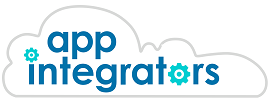So Your Accounting is in the Cloud – But Are You Automated?
Now that your accounting system is in the cloud you need to take the next step and put in some integration and business process automation.
Small businesses in South Africa are rapidly moving their accounting software to the cloud, whether it be with Xero, Sageone or Quickbooks. The advantages are obvious:
- Better Access – anybody with a login can access from anywhere.
- Better Security – your accounting system will not disappear with a crashed hard drive.
- Better Upgrades – Software updates are done on the fly in the background without you even knowing.
- Better Scaling – No hard drive limit on the size of your dataset
Another major benefit that is often overlooked is now that your accounting data is in the cloud, it can connect to your other data in the cloud. You will most surely have other data in the cloud. If your business is using gmail (standalone or as part of Google Suite), then all of your email correspondence is in the cloud too. This means you can now connect what goes on in your email with what goes on in your accounting package. For example you can set up a trigger in your accounting package that every time an invoice is paid you receive an email notifying you.
The same is true of numerous other web apps you likely use – Google Sheets, Facebook, Dropbox, Asana, Trello, Google Drive, Google Contacts, WordPress, Gravity Form, Mailchimp etc.
Most small businesses will have some type of customer database or CRM. This might be something elaborate like Hubspot or Salesforce, or something as simple as a Google Sheet.
The simplest case for integration and automation is to keep your data within your various apps in synch. Lets say, for example, that you have Customer A listed in 4 places – on your accounting software, in a google sheet, on a Mailchimp Mailing list and in your Google contacts Customer A now informs you that they have changed their email address. How do you deal with this?
At present probably somebody in your business has to log into Xero, search for the customer, click the edit button, redo the email field and then click save. Now they have to go do the same in Mailchimp… and Google Sheets… and Google Contacts.
That is a lot of work. If you timed the whole process, across all 4 web apps, a few times with a stopwatch from beginning to end, it could well amount to 10 minutes. Nor is it just limited to email address changes. Bank Accounts change, Staff changes and Physical Addresses change. If you have 10 of these changes a week, that amounts to 7 hours of extra admin a month. If you are paying somebody R250 per hour to do it, that amounts to an unnecessary cost of R 1750 per month.
Besides the cost, the manual updates have other problems:
- Humans make mistakes, computers don’t. A typo in an email address and it won’t reach the recipient.
- Timing delays. Staff that are busy with other tasks might be delayed by hours (if not days) to getting all data in all systems in synch. Outdated data (even in the short-term) can cause many issues. Computers are instant.
- Better scaling. If you have a sudden flurry of activity, staff can be overstretched. Computer automation can handle any quantity instantly.
- Repetitive data input is one of the tasks least stimulating to staff.
As discussed, keeping your data automatically in synch is just the first step in automation and integration. Once your various cloud apps are integrated complex workflows can be triggered that can achieve far more than just data updates. Take the free assessment below and we will try and pinpoint areas in your business that are ripe for automation.
